Golf Advisor senior writer Tim Gavrich recently spent some time in southwestern Michigan. Often overlooked in favor of points north - Traverse City, Harbor Springs, Boyne, Mackinac Island and others - the southwestern part of the state offers its own slate of interesting golf destinations. This is the first in a three-part exploration of this region.
GRAND RAPIDS, Mich. - I knew I was in for an eye-opening trip as soon as I stepped off the airplane.
There, beside my gate at Gerald Ford International Airport (GRR), was a modest scale model of an epic work by Alexander Calder, one of the greatest artists of the 20th century and an all-time favorite of mine.

Installed in 1969 and commissioned with the help of a the National Endowment for the Arts grant, "La Grande Vitesse" ("The Great Swiftness") is one of Calder's "stabile" sculptures (he's best known for his hanging "mobiles"), and presides over a plaza at City Hall in downtown Grand Rapids. Its hulking red metal panels are curved, angled and arranged such that the sculpture looks quite different from different angles. This gives the 43-ton masterpiece the impression of movement in spite of its inanimate materials. This concept is central to the appeal of Calder's work.
What does this have to do with golf?
It occurs to me that in their own naturalistic way, Grand Rapids' three standout golf courses by architect Mike DeVries - Pilgrim's Run Golf Club, Mines Golf Course and Diamond Springs Golf Course - are sinuous works of art in their own right. But they have an advantage over "La Grande Vitesse." Their movement doesn't just intrigue the eye, it influences a struck golf ball as well.
Golf courses are sculptures we are allowed to interact with. Like plain, mostly decorative sculptures, mediocre golf courses don't hold our attention for very long. But when they are assembled by someone with deeper intent - someone like Calder, like DeVries - they tend to linger a bit in our memories, and make us want to return to experience them again. All three of these golf courses function on that more sophisticated level, such that any golfer with an interest in how an imaginative course can elevate the experience of playing the game would do well to visit Grand Rapids.
Pilgrim's Run is the area's best-known publicly-accessible course. Situated about 30 miles north of town, it was DeVries' first course in the area (though original superintendent Kris Shumaker, as well as some friends of owners Robert and Judy Van Kampen, collaborated on the early routing), opening in 1998. DeVries carved the course out of dense forest, nevertheless giving most holes such generous corridors that trees seldom affect the strategy of a given hole. An exception is the short par-4 10th, where the temptation of trying to drive the ball up near the green is complicated by overhanging trees on the right.
An interesting characteristic of Pilgrim's Run: it's a par-73 golf course, with only three par threes. In an era when formulaic par-72 golf courses with four par 3s, 10 par 4s and four par 5s proliferated, DeVries should be commended for letting the routing unfold in a somewhat unconventional way.
Value and service make Pilgrim's Run a pleasure to visit. Its unfailingly friendly staff helped secure it the #1 spot on Golf Advisor's list of "Friendliest Courses" based on last year's golfer reviews and the #1 spot on our "Best Of Michigan" list for 2018, and I cannot disagree. Green fees max out at $69 on a course where the combination of design and conditioning could easily net it $125 or more in green fees in a more populated area.
DeVries second design in greater Grand Rapids, opening in 2002, was Diamond Springs. It is on the opposite end of the region, about 30 miles south-southwest of Grand Rapids proper. Like Pilgrim's Run, it is well worth the drive through very quiet rural farmland.
Diamond Springs is a masterclass in austere routing and design. There are just three maintained cuts of grass; the greens; the fairways and tees; and a modest intermediate cut separating the fairways from wispy fescue natural areas. Ripples and ridges run through fairways and into greens. Negotiating these contours is essential to getting around the course well, especially since the turf is firm. While there are some gorgeous, simple bunkers, DeVries mostly uses them to enliven the quieter parts of the land. The par-5 8th is a perfect example, where four bunkers guard a figure-8-shaped green on one of the flatter parts of the property. The relation of the day's hole location to these bunkers affect which side of the fairway is best to approach the green.
Few American golf courses supply a value proposition as strong as Diamond Springs. The absolute highest rate is $52 on a weekend, cart included. But the course is a great walk; that rate maxes out at $35.
The final leg of the DeVries triad is Mines Golf Course, opened in 2005 and located just three miles west of Downtown Grand Rapids. It also sits between Diamond Springs and Pilgrim's Run in terms of price, with green fees topping out at $59. As the name suggests, the course is routed over an old gypsum mining site, and it has some truly eccentric land, which dictated a three-piece routing of mostly east-west holes. To an even greater extent than at Diamond Springs, the hilly nature of the site keeps bunkering to a minimum; only a dozen holes have them. On the other six, the terrain is a stout defense. Right off the bat, the shortish par-4 first hole tips over a hill to a green with several levels and a deep swale in front. Bunkers would not add anything to this hole.
Two notes on Mines. First, Mike DeVries is currently planning the design of a par-3 course on the far western end of the property. Second, the course is closed on Sundays, owing to the owners' Protestant Reform faith. Plan accordingly if you're there for a weekend trip.
The Meadows at Grand Valley State University

Grand Rapids' golf doesn't end here. About 20 minutes due west of town, The Meadows at Grand Valley State University is a solid college course. Despite fairly flat land, the 1994 routing by Michael Hurdzan and Dana Fry provides plenty of interest via clever bunkering and undulating greens. It is also typically in fantastic shape, making its $59 maximum green fee ($41 for walkers) a bargain.
There are destinations where you can barely get two rounds in at peak times of year for $250. In Grand Rapids, you can play twice the golf at similar quality for $239. Go there with great swiftness.
Other notes
- Michigan is big on craft beer, and Grand Rapids might be the epicenter of the brew scene. Founders Brewing Co. is a major downtown attraction, with dozens of beers available at the source, as well as a restaurant serving apps and gourmet sandwiches. Other breweries like Vivant, The Mitten and City Built have devoted followings, as well.
- Thanks in part to Founders Brewing, Grand Rapids' downtown is in the midst of revitalization. Hospitality is part of the equation, and I can vouch for the brand-new Embassy Suites, which offers views of the city over the Grand River. Several other large hotels dot the district, including a J.W. Marriott and the Amway Grand Plaza, which dates to the 1920s and is a member of Hilton's Curio Collection. A quick scan of Airbnb reveals several affordable downtown possibilities as well.
- There is a strong historic Dutch influence in and around Grand Rapids, with names like DeVos, Van Andel and Meijer on buildings around town. Meijer, the Midwestern superstore ("Wal-Mart, but much nicer" was how it was described to me) is a main source of groceries and sundries for area residents. Formal gardens named for founder Fredrik Meijer are a popular local attraction, as is the annual Meijer Classic, an LPGA Tour event held every summer at the private Blythefield Country Club.
- Perhaps the largest annual event in Grand Rapids is ArtPrize, formerly held every fall. Its popularity has prompted organizers to hold it in even years going forward, so 2019 will bring the first-ever Project [1], a smaller version of the juried art competition that brings upwards of 500,000 people to town each year.
- Grand Rapids is a sneaky-solid food town. Michigan is famous for its "Coney" hot dogs, and I had a couple great ones, as well as tremendous french fries and homemade ketchups, at the mom-and-pop-run One Stop Coney Shop. I also had an excellent poke bowl at Wikiwiki Poke Shop in the pleasant Baxter neighborhood on the east side of town. The Donut Conspiracy is a must for their sweet breakfast options.
- Michigan is great for summer and early-fall golf not just because of the weather, but the abundant daylight. During my late-June trip, it was light outside until nearly 10 pm every night - perfect for getting in 36 holes a day easily, or even 54 if you're really ambitious.




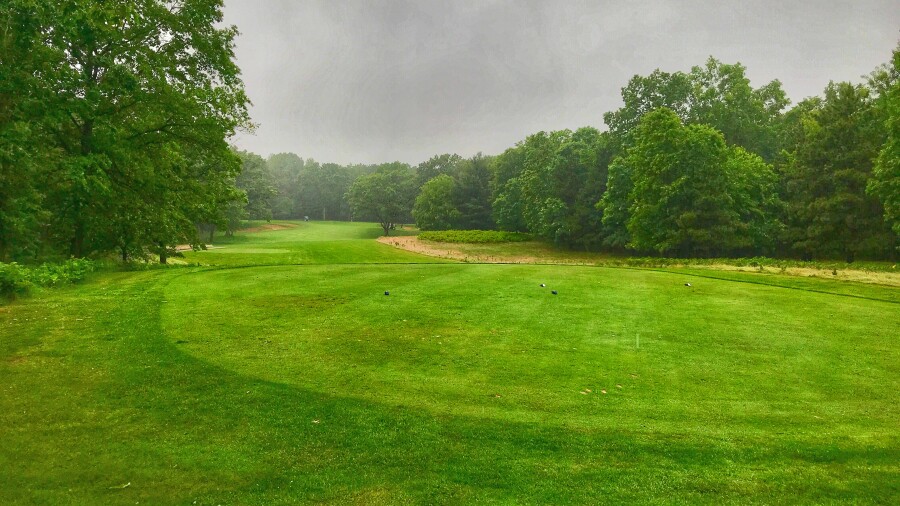
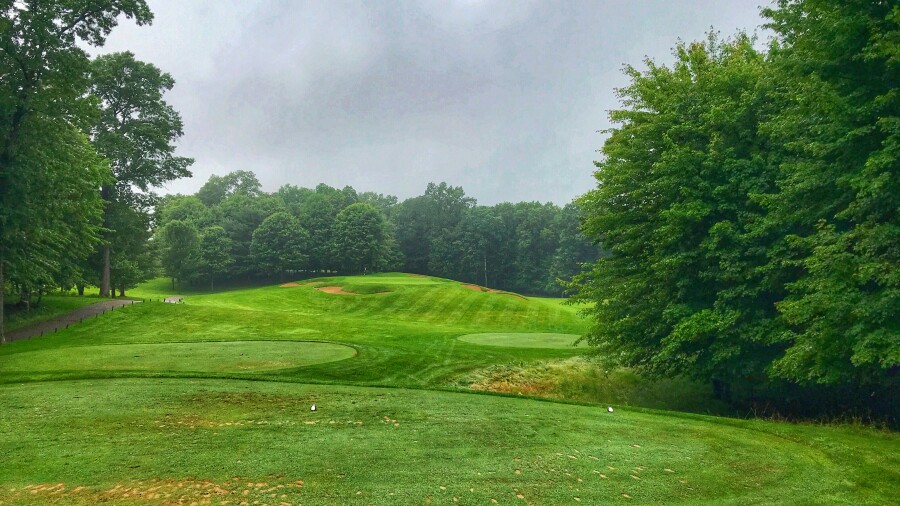





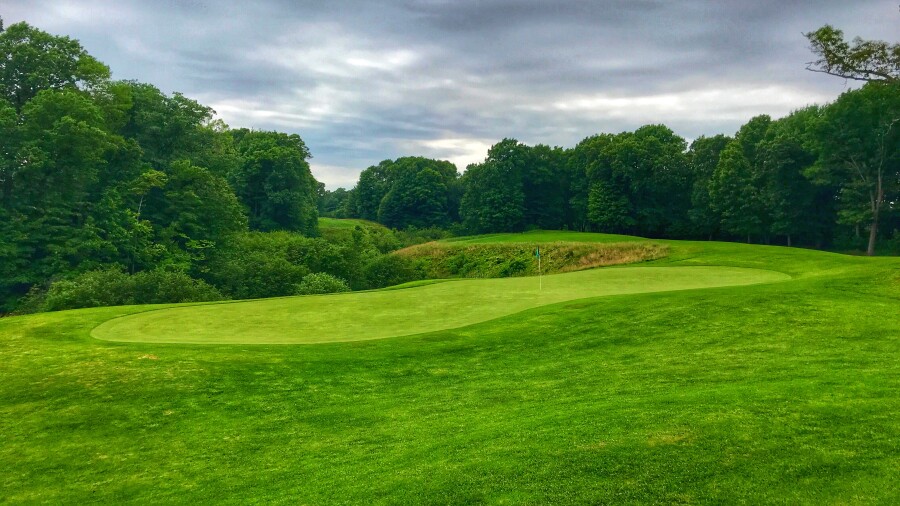
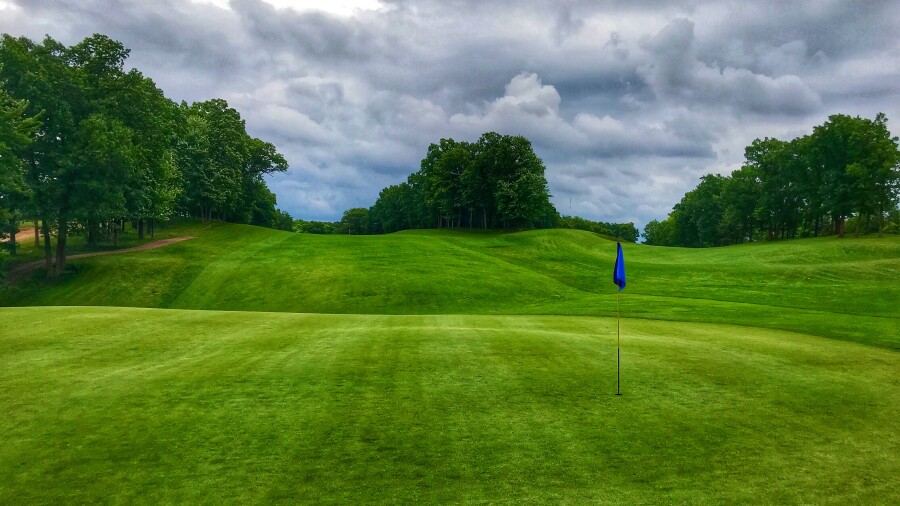










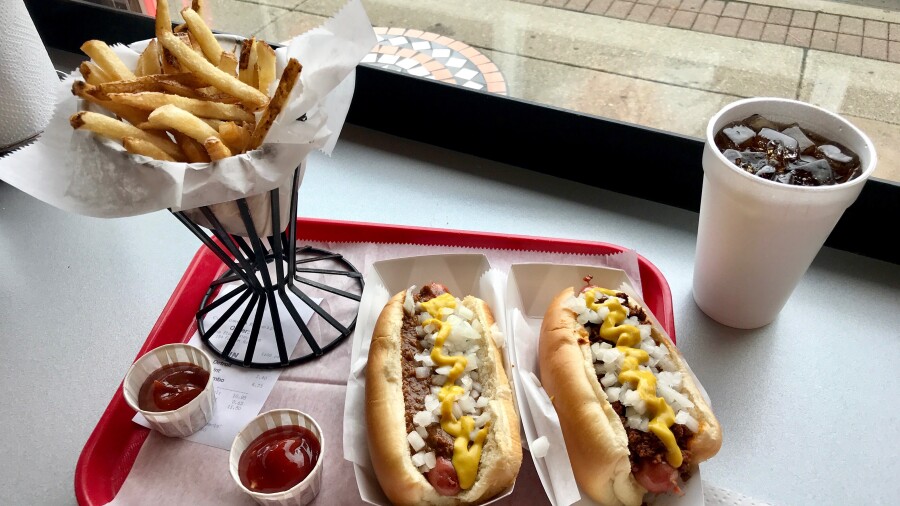



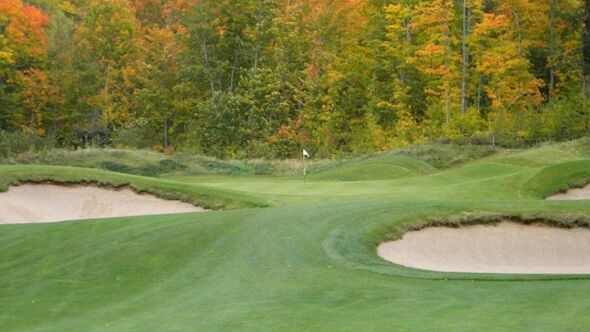
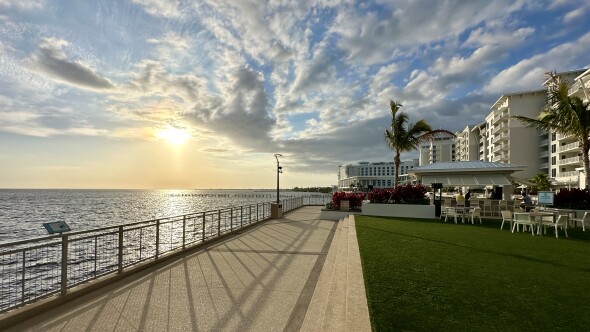









Tim's article makes me want to head back to Grand Rapids to play the three DeVries courses.